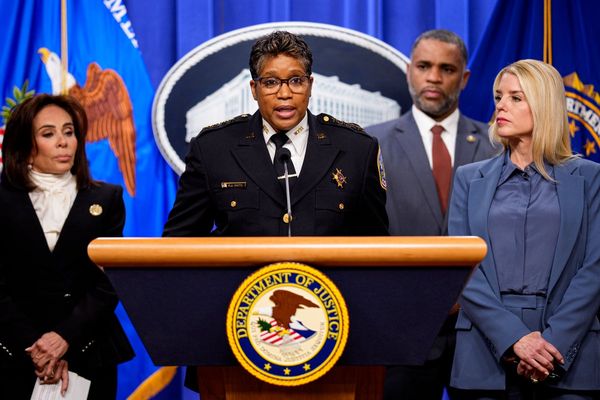
The Canadian government recently announced its decision to enter negotiations with American aerospace giant Lockheed Martin to buy 88 F-35 fighter jets.
The $19-billion contract is separate from $8 billion in additional funding for defence that Finance Minister Chrystia Freeland unveiled as part of the 2022 federal budget.

This is the second time Ottawa has chosen the stealthy aircraft. In 2010, the governing Conservatives said the F-35 was the only choice for the Royal Canadian Air Force. The opposition disagreed, and the warplane became an issue in successive federal elections.
This history is what makes the recent announcement so embarrassing for the Liberal government.
Campaigning to unseat the Conservatives in 2015, the Liberals criticized the sole-sourcing of the F-35 as both unfair and misguided. They were wrong.
In 1997, the United States government asked a few of its allies to participate in co-developing and co-producing a fighter jet that would become the F-35, and Canada agreed.
The deal was unusual, but its logic made sense, especially to the Canadian government. Why not work with its biggest economic and security partner while also giving Canadian aerospace firms opportunities to win contracts in what is sometimes referred to as the “the arms deal of the century?”
The current lifetime cost estimate of $1.6 trillion makes it the most expensive weapon system ever built and puts it on equal footing with the entire outstanding U.S. federal student loan debt and President Joe Biden’s Build Back Better plan.
Fighter jet competition
In 2017, the Trudeau government launched what it called an “open and transparent” competition for fighter jets. Designed to rigorously assess bids on elements of capability, cost and economic benefits, this process eventually came down to just two warplanes — the F-35 and Sweden’s Saab Gripen.

This all but guaranteed the F-35’s win. The last non-American fighter to enter the Royal Canadian Air Force was the Vampire in 1948, manufactured by the British company de Havilland.
As a general rule, Canada’s military wants platforms that offer seamless or advanced interoperability with U.S. forces — not merely compatibility or basic interoperability that would have been the case with the Swedish jet.
The fact that the F-35 is yet to lose a competition is due both to the size of the program and U.S. influence.
The more air forces that buy it — Canada’s decision brings that number to 18 — the lower its operational and other costs. That’s because network effects, as economists call them, generate not only profits for contractors but also international power and influence.
Citing security concerns about the aircraft’s design details, the U.S. government is requesting every F-35 customer remove all 5G equipment made by China’s Huawei from their networks in the coming years. Those failing to comply will likely be removed from the program.
Something similar happened to Turkey in 2019 after its government decided to buy a Russian missile defence system. U.S. officials said that posed risks to the F-35s, including the possibility that Russia could covertly use the system to obtain classified details on the jet.
Strings attached
The strings attached to F-35 purchases have prompted some to call the fighter jet program “America’s One Belt, One Road” — a tongue-in-cheek reference to China’s major foreign policy initiative and the Chinese tendency to strong-arm smaller states into participating. In Canadian politics, however, those strings are largely immaterial because dependence on the U.S. and its military power has long been a huge net benefit.
But what about today, with the ongoing Russian invasion of Ukraine, a rising China and a radicalized U.S. Republican Party?

These developments are troubling and disorienting, but the fundamentals of Canada’s defence are not necessarily shifting dramatically. Whatever happens in Ukraine and in future American elections, the U.S. will almost certainly prioritize the North American homeland, keeping a close eye on both Russia and China.
Accordingly, Ottawa will be expected to add capacity to Canada’s NORAD and NATO commitments, and that means investing in the new aircraft. The new defence budget measures announced by Freeland are in fact designed to strengthen these commitments.
But Trudeau’s topsy-turvy relationship with the F-35 will continue to be mocked. Had the Conservative plan survived the end of the Harper government, RCAF pilots would now be much closer to flying the new jet.
Instead, until at least 2025 — when the first new F-35s are expected to arrive — they will have to rely on an aging CF-18 fighter force, plus the equally aging, used F/A-18s the Liberals acquired in 2019 from Australia as a stop-gap measure.
Some taxpayer money might have been saved, too, had the government bought the F-35s 12 years ago.
Standing on its own
Given the assorted risks and threats Canada could face — including from authoritarian powers, cyber warfare, another pandemic, natural disasters and the accelerating effects of climate change — military procurement is only a small piece of the overall puzzle.
The principal challenge for the federal government is assessing problems in their totality and improving Canada’s own ability to tackle these issues on its own, without being overly affected or reliant on the U.S.
Read more: Coronavirus shows why Canada must reduce its dependence on the U.S.
This requires aligning goals and commitments with necessarily limited resources. A far-reaching, comprehensive review of the defence, security, diplomatic and development issues facing Canada would be a step in the right direction.
One way for the Liberals to atone for their contributions to Canada’s fighter jet replacement farce would be to put forth a strategic vision for the country — and do so sooner rather than later.
Srdjan Vucetic received funding in 2011-2014 from Canada's Social Sciences and Humanities Research Council for a research project on U.S. arms transfers.
This article was originally published on The Conversation. Read the original article.







